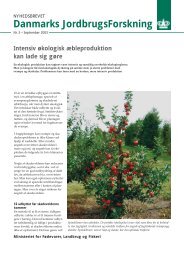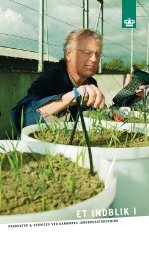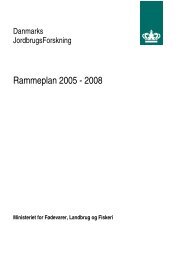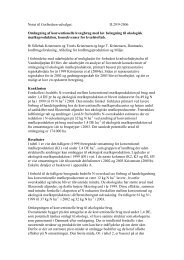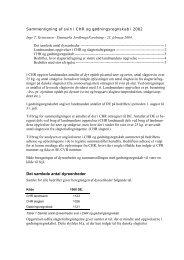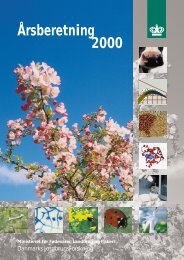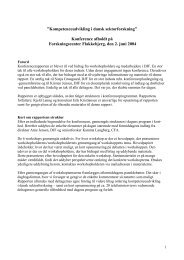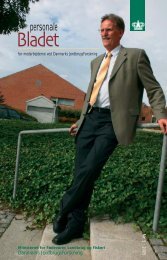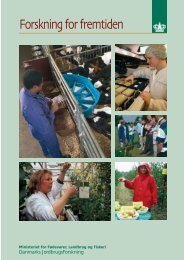Reproduction performances and conditions of group-housed non ...
Reproduction performances and conditions of group-housed non ...
Reproduction performances and conditions of group-housed non ...
You also want an ePaper? Increase the reach of your titles
YUMPU automatically turns print PDFs into web optimized ePapers that Google loves.
- How does <strong>group</strong> housing vary in practice? -<br />
HOW DOES GROUP HOUSING VARY IN PRACTICE?<br />
A basic knowledge <strong>of</strong> how <strong>group</strong> housing varies in practice is a prerequisite for identifying<br />
important causes for impaired reproduction performance in <strong>group</strong> <strong>housed</strong> <strong>non</strong>-lactating<br />
sows. In this chapter some <strong>of</strong> the applied housing <strong>conditions</strong> are shortly described. The description<br />
is based on a combination <strong>of</strong> own observations, personal communication with<br />
people who work with pig production in practice (e.g. advisors), literature presented in pig<br />
magazines <strong>and</strong> scientific journals. The description is to a large degree founded on Danish<br />
<strong>conditions</strong>. However, it is aimed also to include experiences from outside Denmark.<br />
Housing <strong>conditions</strong> may e.g. vary with<br />
respect to feeding procedure, timing <strong>of</strong><br />
mixing <strong>of</strong> <strong>group</strong>s, <strong>group</strong> dynamics,<br />
<strong>group</strong> size, stocking rate <strong>and</strong> floor type.<br />
Feeding procedure<br />
In general, feeding procedure can be<br />
divided into two different principles:<br />
Group feeding <strong>and</strong> individual feeding.<br />
Common <strong>group</strong> feeding procedures are<br />
1. Floor feeding, 2. Providing liquid<br />
feed in long feeding troughs with or<br />
without individual troughs dividers <strong>and</strong><br />
3. Bi<strong>of</strong>ix. (Svendsen et al., 1990; Brouns<br />
& Edwards, 1992; Olsson et al., 1993;<br />
Fisker, 1994). In bi<strong>of</strong>ix the feed is provided<br />
in a trough with individual<br />
troughs dividers in a speed that match<br />
the eating rate <strong>of</strong> the sows in order to<br />
ensure that each sow are ‘fixed’ at one<br />
place throughout the feeding (‘biological<br />
fixed’). In bi<strong>of</strong>ix, as in the other<br />
<strong>group</strong> feeding systems differential feeding<br />
within a <strong>group</strong> is not possible. The<br />
<strong>group</strong> feeding procedures mentioned are<br />
illustrated in Figure 1.<br />
Figure 1. Floor feeding, liquid feed in long<br />
feeding troughs <strong>and</strong> bi<strong>of</strong>ix (photos: L.U. Hansen<br />
<strong>and</strong> A.G. Kongsted).<br />
15




